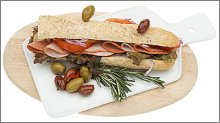太浮閑話
湘西山民的搏客最近一則新聞,從城裏傳到了俺鄉下:
大凡關注食品健康的人,肯定聽過“隔夜菜致癌”的說法。在網絡、報刊上,甚至有某人吃了隔夜菜被送進急救室的報道。許多專家也紛紛解釋:隔夜菜會產生亞硝酸鹽,而亞硝酸鹽是一種致癌物。(http://zhongyi.ifeng.com/news/ssys/20104/42234.shtml)
看來這裏的罪魁禍首是亞硝酸鹽。這個亞硝酸鹽是什麽咚咚?它是哪裏來的?食品裏有多少?相關標準如何?到底與癌症有啥關係?
(1) 亞硝酸鹽的功與罪
常用的亞硝酸鹽是亞硝酸鈉,Wiki 有以下信息:
亞硝酸鈉(NaNO2)常用於魚類、肉類等食品的染色和防腐。純淨的亞硝酸鈉是一種白色至淺黃色晶體。亞硝酸鈉有鹹味,被用來製造假的食鹽。在空氣中,亞硝酸鈉會被緩慢氧化成硝酸鈉(NaNO3)。亞硝酸鈉被用於人或動物的血管擴張、支氣管擴張藥物中,甚至可以用於氰化物的解毒。
亞硝酸鹽是致癌物。研究表明(compiled by sixwise.com):
![]()
-
Cancer: When you eat nitrites, they can be converted into nitrosamines under certian conditions, which are potent cancer-causing chemicals, in your body. Specific cancers seem to be most affected, including:
-
Colorectal Cancer: People who ate the most processed meat were 50 percent more likely to develop lower colon cancer, according to a study in the Journal of the American Medical Association.
-
Stomach Cancer: An investigation into 15 studies on processed meat found that the risk of stomach cancer increased from 15 percent to 38 percent if the processed meats ratio consumed by an individual rose by 30 grams.
-
Pancreatic Cancer: People who ate the most processed meats had a 68 percent higher risk of pancreatic cancer compared with those who ate the least, a study in the Journal of the National Cancer Institute found.
-
|
If you love lunchmeat, pepperoni, bacon, sausage and other cured meats, look for nitrite-free varieties in your grocery store. If they're not there, request them! |
(2) 看起來很嚇人,那哪些食品裏亞硝酸鹽含量高?
(A) 蔬菜與果汁:
Nitrate (硝酸鹽) and nitrite (亞硝酸鹽)contents of edible components of vegetables (Am J Clin Nutr July 2009 vol. 90 no. 1 1-10 )
| Vegetable types and varieties | Nitrite | Nitrate |
| mg/100 g fresh weight | mg/100 g fresh weight | |
| Root vegetables | ||
| Carrot | 0.002–0.023 | 92–195 |
| Mustard leaf | 0.012–0.064 | 70–95 |
| Green vegetables | ||
| Lettuce | 0.008–0.215 | 12.3–267.8 |
| Spinach | 0–0.073 | 23.9–387.2 |
| Cabbage | ||
| Chinese cabbage | 0–0.065 | 42.9–161.0 |
| Bok choy | 0.009–0.242 | 102.3–309.8 |
| Cabbage | 0–0.041 | 25.9–125.0 |
| Cole | 0.364–0.535 | 76.6–136.5 |
| Melon | ||
| Wax gourd | 0.001–0.006 | 35.8–68.0 |
| Cucumber | 0–0.011 | 1.2–14.3 |
| Nightshade | ||
| Eggplant | 0.007–0.049 | 25.0–42.4 |
Mean nitrate and nitrite contents of a convenience sample of juices (ibid)
| Juices | Nitrate | Nitrite |
| mg/L; ppm | mg/L; ppm | |
| Acai | 0.56 | 0.013 |
| Carrot | 27.55 | 0.036 |
| Cranberry | 9.12 | 0.145 |
| Green tea | 0.23 | 0.007 |
| Pomegranate | 12.93 | 0.069 |
| Vegetable juice1 | 26.17 | 0.092 |
(B)醃製與處理過的魚肉
亞硝酸鈉作為食品添加劑,不僅可以對魚類、肉類食品進行染色和保鮮,還可以抑製肉毒杆菌的生長。後者可以產生肉毒杆菌毒素,造成食物中毒。在歐盟標準下,亞硝酸鈉隻能以不高於0.6%的含量與食用鹽混合使用,它的E編碼是E250。對亞硝酸鉀的標準與之類似。(wiki)
美國肉類製品(ham, hot dog, sausage, etc.) 含亞硝酸鹽 156 mg/kg. Bacon: 120 mg/kg.
亞硝酸鈉可以抑製細菌生長,相應的,在含量比較高的狀況下它也對包括人的動物表現明顯的毒性。亞硝酸鈉對鼠的半數致死量為180 mg/kg(體重),對 人的已知最低致死量為71 mg/kg(體重),就是說一個重65 kg的人可能被最低 4.615 g該種物質致死。為了避免被誤食,混有亞硝酸鈉的食鹽(被用於非飲食用途)往往被染成淺紅色。 (wiki)
(3) 各國食品中亞硝酸鹽相關標準是什麽?
中國《食品中汙染物限量標準》:
新鮮蔬菜 < 3 毫克/公斤(蔬菜)
新鮮肉類 < 4 毫克/公斤(肉類)
中國《食品安全國家標準》:
熟肉製品 < 30 毫克/公斤
醬醃蔬菜 < 20 毫克/公斤
這個標準比美加都嚴得多。不知道執行情況如何?
美國:
EPA reference dose for chronic oral exposure: 1.6 mg/kg-day for infants
EPA drinking water advisory (4 kg child): 1 day = 1 mg/kg and 10 day = 1mg/kg
EPA maximum contaminant level (MCL): 1 mg/L
FDA: < 10 mg/kg as a color fixative in smoked cured tunafish products
FDA: < 200 mg/kg as a preservative and color fixative, with or without sodium nitrate, in smoked, cured sablefish, smoked, cured salmon, and smoked, cured shad
(21CFR172.175)
加拿大 (亞硝酸鹽和硝酸鹽總量):
Cured meat and meat by-products: < 200 mg/kg
Bacon: < 100 mg/kg
(http://www.gov.mb.ca/agriculture/foodsafety/processor/cfs02s71.html)
回到開頭的新聞,說幾種隔夜菜中的亞硝酸鹽含量是5-7 毫克/公斤。看來還是先從臘肉,午餐肉,醬菜做起吧。
(4) 煮熟的菜隔夜放置亞硝酸鹽含量會增加嗎?
這個才是磚家們忽悠的重點。有關的事實如下:
(1)蔬菜炒菜的過程中,在空氣中加熱是氧化環境(亞硝酸鹽會部分轉化為硝酸鹽),細菌會被殺死,各種酶(包括硝酸鹽還原酶)會失去活性。亞硝酸鹽的含量不會有增加。
(2)食物儲存的過程中,依然是氧化環境。可能的汙染是 air borne bacteria。 但是這不僅僅是蔬菜的汙染源,也是各種肉類的汙染源。這時最大的危險不是亞硝酸鹽,而是細菌中毒, 比如肉毒杆菌。
結論: 煮熟的蔬菜隔夜放,亞硝酸鹽很難有明顯增加。對健康的影響極其有限。讓磚家們吃午餐肉香腸和熱狗去吧(亞硝酸鹽含量高達 156 mg/kg)。 俺鄉下人吃過夜的蔬菜不怕得癌症(亞硝酸鹽 < 7 mg/kg)!
據網友說:蔬菜隔夜存放亞硝酸鹽顯著增加的原因是夜裏容易鬧鬼。這個說法很有道理。不然從早上存放到晚上磚家怎麽就沒有說亞硝酸鹽顯著增加呢?





